 Your new post is loading...
 Your new post is loading...
One of the main effects of Pokémon Go has been to draw attention to existing AR apps, that build on current smart device functions — namely GPS and cameras. This works because the cameras allow for a view the environment in real time, which can be “augmented” from the user’s viewpoint. AR’s potential has been recognized by retail for quite a while. For example Lego introduced an AR app a full six years ago, allowing customers to hold a box in front of an in-store monitor and see what the finished model would look like.
More recently, the online store Wayfair launched Wayfair view, allowing shoppers to superimpose potential purchases on their own space to see if the items would fit and how they would look. Ikea has an AR catalog app, that lets shoppers use their smartphones to virtually furnish their rooms with items from the catalog. Other apps allow customers to virtually try on shoes and clothes and in some cases share photos with their social networks.
Retailers can also use AR to enhance and tailor the customer experience. Using a specialized store app, customers can get more information about a product, its availability and potential discounts or promos. By including AR components to store displays, retailers are able to profit from the fact that their customers are often more preoccupied with their phones than the merchandise right in front of them. Apps can also direct customers to particular items, and provide a guided map to the specific shelf, something that is tremendously useful in large stores....
Most retail outlets — whether conventional brick-and-mortar shops, digitally enhanced stores like Macy’s in the U.S. or Burberry in the UK, or online stores — assume a traditional three-stage consumption model. The customer experiences a need, shops to satisfy the need, and then consumes or uses the product purchased (I need shoes, I buy shoes, I wear them). TThe vocabulary of retailing reflects this model, assuming in particular that shopping is the central component of this model. Marketers will talk about shopping trips, shopping missions, shopping baskets, shopping lists, and destination trips. What’s more, current practice for the most part still rests on the idea that many decisions on which particular product to buy are made in the store — whether physical or online. Hence, brands engage in an arms race of persuasion and hard-sell tactics (prices, promos, presence) at the point-of-sale order to sway the customer when she is ready to transact. But winning in retailing today is less and less about control of the shopping experience because there is no longer a clearly defined shopping stage. The model is changing as new technologies allow people to bring the purchase of the product that satisfies their need closer to their first perception of it. And this makes the perception of the need — rather than the shop — the stage that marketers need to control. This paradigm shift — and it really is that — is apparent in three ways....
Beacons have been heralded as the future of retail, with 85% of retailers expected to use the technology by 2016. But getting a successful proximity-marketing program off the ground involves more than just setting out a few digital devices.
A bad user experience or a lack of infrastructure can derail even the most ambitious beacon program, which is why executives from some of the industry’s top firms are now focusing so heavily on client education. By offering guidance during the setup process, technology providers are hoping to help retailers overcome common challenges and launch more successful beacon programs.
Here are the top six most common reasons why beacon programs fail, as seen through the eyes of experts working in the industry....
Via Douglas G Hall
There’s a tsunami of change coming toward the retail business environment and interaction with the customer that may turn today’s approaches and strategies in completely new directions, impacting everything from store design to communication with consumers.
It’s termed “living services,” and according to a new Accenture report it will let retailers deploy less intrusive customer experiences while boosting customer engagement and fostering stronger and faster sales.
The report provides information on how some brands are already putting ‘living services’ to work within the retail spectrum. One is example cited is how fashion retailer Nordstrom is determining store merchandising now on a weekly basis through tracking and gauging consumer product interest using the social network tool Pinterest.
“Living services will allow retailers to move away from the industry’s standard scenario of bombarding shoppers with offers on arrival at a location. By working with Pinterest Nordstrom is also providing staff with an iPad app to make it easy to show customers trending products and merchandise live,” stated the report.
The technology enabling “living services” is now mature enough for brands to create and deliver them at scale, the report said....
Webloyalty research into online consumers has revealed that UK retailers could be missing out on as much as £66m in additional revenue through failing to personalise the experience they offer online shoppers. Over half of UK consumers said that they would make more of an effort to use a retailer if it offered a good personalised experience.
The top fifty retailers in the UK have an average turnover of £3.2bn*. For an average-sized retailer generating a turnover of £850m (such as Wickes or Mothercare), this could deliver a 7.8% uplift in sales**.
In monetary terms, this translates to an annual uplift of £66 million, not only stimulating online consumers to spend, but also helping to improve loyalty. For larger companies, this number would naturally increase even further....
Despite a myriad of research studies pointing to the importance of personalization, the majority (74%) of online retailers still promote irrelevant items to shoppers via email, according to OrderDynamics c research. Some retailers (33%) don’t even sufficiently follow up with consumers after they sign up for the brand mailing list.
The report, titled: Customer Relationships: The Dating Game, compares retailing to dating, in that businesses have to convince consumers to “go out” with them to start and continue a business relationship. The study specifically measures the effectiveness of a “first date,” or purchase, as well as the long-term relationships that can lead to additional purchases and increased order values. Opinion Matters conducted the study on behalf of OrderDynamics by surveying more than 60 retailers and 2,000 consumers....
The retail industry is hiding behind the showrooming threat, but the real problems may run deeper.shopping at a store, isn't really the huge threat to traditional retail that it is made out to be.
The ravages of showrooming may in fact be more reflective of traditional retailers failing to provide a good service or experience.
In a new BI Intelligence study on "reverse showrooming" — online research that leads to in-store purchases — we discovered plenty of data suggesting that shoppers often prefer to shop in-store, if the right barriers are removed. Here's what the evidence suggests about what really drives people away from shopping in-store....
Back in the day when you wanted to buy a new pair of pants, you had to flip through magazines for inspiration, then visit a store and buy the jeans. This process evolved into flipping through a magazine or reading a blog for inspiration, and then looking for the pair of jeans that you want in an online store.
Now however the desire to buy something might just strike you at any given moment in time. Therefore, brands need to reach consumers directly – wherever they are, in any context.
Your device has become an online portal that takes you one step closer to making the purchase that you are thinking of. Your device is the bridge between physical and digital interaction. SOME argue that the emergence of digital will render physical retail obsolete. Some might even go so far to already proclaim the death of retail. But retail is actually more alive than ever. STUDIES even show that in-store digital marketing technologies increase brand engagement and open up new avenues for customer interaction....
The BBC's Jill Martin visits US clothing company Lolly Wolly Doodle, which is helping to lead the way in selling directly through Facebook.
As a family-run company with just 160 employees and a funny name, US children's clothing manufacturer Lolly Wolly Doodle (LWD) does not immediately seem like a trendsetter.Yet the North Carolina firm and its owner Brandi Temple are at the forefront of how small retailers are increasingly selling their wares directly through Facebook.
Billionaire investor Steve Case, the co-founder of US internet group AOL, is so impressed with LWD and its "Facebook commerce" business model that earlier this year his Revolution Growth fund invested $20m (£13m) in the company.
He says that LWD has the potential to be a billion-dollar business.Mr Case adds: "Ms Temple really had pioneered the whole area of social shopping. It's really bringing consumers almost into the design process."For most people focused on e-commerce, social is an afterthought. For her, it's the main event. I think that's unique."...
Brands like Amazon, Netflix, OKCupid, Pandora and Twitter are tracking customers’ online behavior to produce targeted offerings and increase sales. What stats are they looking at and offering as a result, you may ask? This infographic tells all....
|
Retail profits are plummeting. Stores are closing. Malls are emptying. The depressing stories just keep coming. Reading the Macy’s, Nordstrom, and Target earnings announcements is about as uplifting as a tour of an intensive care unit. The Internet is apparently taking down yet another industry. Brick and mortar stores seem to be going the way of the yellow pages. Sure enough, the Census Bureau just released data showing that online retail sales surged 15.2 percent between the first quarter of 2015 and the first quarter of 2016. But before you dump all of your retail stocks, there are more facts you should consider. Looking only at that 15.2 percent “surge” would be misleading. It was an increase was on a small base of 6.9 percent. Even when a tiny number grows by a large percentage terms, it is often still tiny. More than 20 years after the internet was opened to commerce, the Census Bureau tells us that brick and mortar sales accounted for 92.3 percent of retail sales in the first quarter of 2016. Their data show that only 0.8 percent of retail sales shifted from offline to online between the beginning of 2015 and 2016. So, despite all the talk about drone deliveries to your doorstep, all the retail execs expressing angst over consumers going online, and even a Presidential candidate exclaiming that Amazon has a “huge antitrust problem,” the Census data suggest that physical retail is thriving. Of course, the shuttered stores, depressed execs, and tanking stocks suggest otherwise. What’s the real story?...
" A surprising group of retailers are dominating social media conversations and engagement so far this holiday season, led by Nordstrom, Macy’s and Sephora, according to Shareablee Social Scorecard. Kohl’s came in at a much more distant fourth place, followed by Amazon.
The rankings, which are based on combined analysis of total actions —shares, comments, retweets, and reblogs — on Instagram, Facebook, Twitter and You Tube, show an overall 26% increase in engagement and 170% jump in actions this year. This is despite a sharp decrease in posts featuring Black Friday deals, which fell 32% on Facebook and 27% on Twitter.
"What really stood out to us this year is the rise of the specialty store, and not so much the mass marketers,” says Shareablee's founder and CEO, Tania Yuki. “I was expecting to see Walmart and Target ranked much higher, and instead we saw exceptional strength in brands like Nordstrom, Sephora, Barney’s and Neiman Marcus.”...
How much is your customer worth?
One approach would be to re-focus acquisition strategy based on the Customer Lifetime Value or CLV. According to the 2015 RJ Metrics Benchmark report, a new e-commerce customer is worth, on average, $154 in their first year. This number varies by type of retail. For instance, the categories of housewares, food and drugs tend to be above this average.
What is more interesting is that only 32 percent of these new customers are likely to make a second purchase in their first year. The report also reveals that the top 1 percent of customers are worth 18 times more than the average customer, which equals about $2,772.
Armed with this information, an e-tailer can easily calculate ROI on programs targeting new customers vs. programs targeting your biggest fans—the top 5 percent....
Smartphones and the emergence of the Internet of Things is giving the consumer new power to demand the products that they want for the best possible price. One increasing trend is in-store real-time price comparison: 40% of consumers surveyed by GFK double check offers using their mobile phone.
What’s more, an additional one billion consumers across the world are expected to begin using smartphones in the next five years. For retailers, knowing the market and understanding how consumers want to shop is more important than ever.
The next two years will bring about new behavioural realities of device connected retail environments. What sort of shopper habits will develop as new retail technologies become widespread and expected by the consumer? And most importantly, what can retailers actually do about it?
Yes, current retail environments (both on and offline) are data-rich and increasingly personalised. But culture hasn’t caught up yet. In the past, technological advances in retail have been defined by the friction they introduced to the shopping process, rather than convenience. Think of the current state of self-checkouts; theoretically timesaving, but in practice just an often-broken inconvenience. It hardly feels like progress.
But not for long. Retailers are growing savvy and sophisticated in their use of new technologies to improve customer experience (and their bottom line). As these realities take hold and culture adapts around new technological promise, entirely new consumer patterns and expectations will emerge....
It has to woo overlooked small retailers in the same way a disruptive technology needs to cater to developers.
Chinese e-commerce giant Alibaba has gotten lots of attention thanks to its pending multi-billion-dollar U.S. IPO. It seems to have no immediate plans to expand in the U.S.—but that's likely just a matter of time. And when it does, Amazon had better watch out, because Alibaba has a host of ready allies: the legions of mom-and-pop retailers that Amazon has left stranded in its wake.
Let's start with some background from Alibaba's perspective. The company controls 80% of the Chinese e-commerce market, which means it needs new markets in order to grow. Its current model—acting as an e-commerce middleman that connects buyers and sellers—might translate well to some big emerging markets, but Alibaba will need to take a more subtle approach in America for three reasons...
As consumers grow more accustomed to speedy online deliveries, eBay is hoping to exceed consumer demand. To accomplish this, the auction giant just acquired Shutl, a marketplace that uses a network of couriers to deliver local goods on a same-day basis.
According to Devin Wenig, president of eBay Marketplaces, consumption on the auction network has shifted strongly toward local purchases, probably as a result of eBay Now, a service released last October that lets shoppers order products from local stores and receive them in as little as an hour.
“Today, approximately 75 percent of what people buy is local, found within 15 miles from their home,” said Wenig. “Traditional retail isn’t going away. But it is transforming, and that creates enormous opportunity within the $10 trillion total commerce market.”...
Recent research from the Centre for Retail Research (CRR) predicts that one in five retail stores on the high street will close in the next five years – in addition to the ongoing shop vacancy rate of 14.1%. But there's signs that the future doesn't need to be all about reducing store or staff numbers to boost finances.
Many retailers are adapting their model to shoppers’ changing habits and desires - taking advantage of technology to improve the instore experience and improve profitability. In doing so, they may be inadvertently reshaping the role of bricks and mortar shops....
When it comes to selling luxury via social media, some brands are far more artful than others, according to a new analysis of social-media platforms from L2’s latest report.
The report ranked some 250 prestige brands across 15 social media platforms. Swarovski is batting a thousand and present on all of them, followed by fast-fashion chain Uniqlo, active on 13. “Prestige brands are present on an average of seven platforms, with 15% on 10 or more,” writes Scott Galloway, professor of marketing at New York University’s Stern School and founder of L2. “Brands are still searching for the right balance between promise and performance and, as costs increase, will likely pare down the number of platforms they invest in.”...
|



 Your new post is loading...
Your new post is loading...



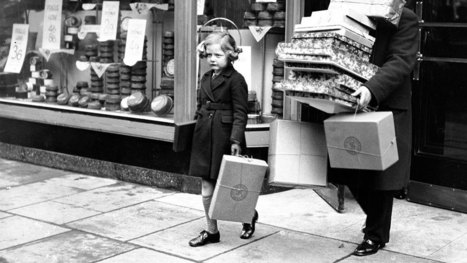



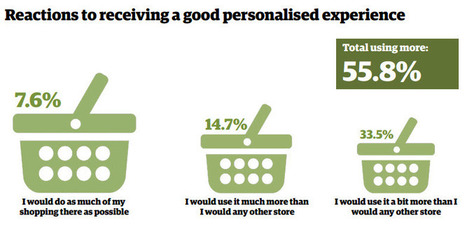









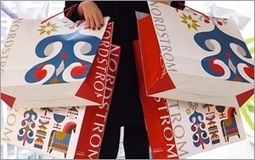


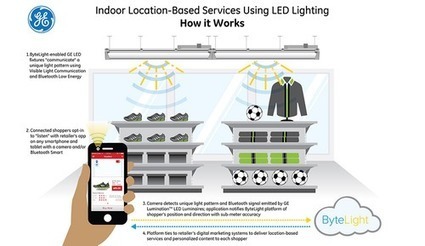




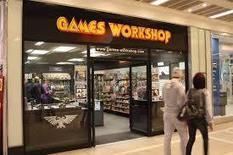






Valuable thoughts on how retail and business can capitalize on the potential impact of Pokémon Go.